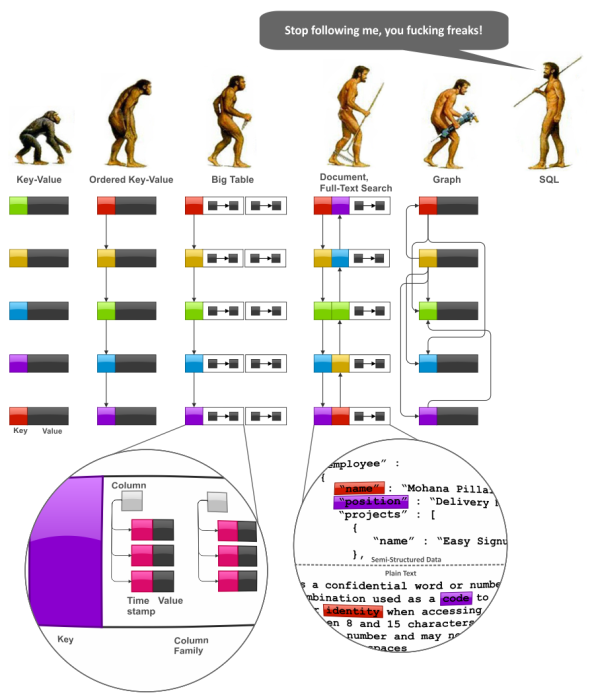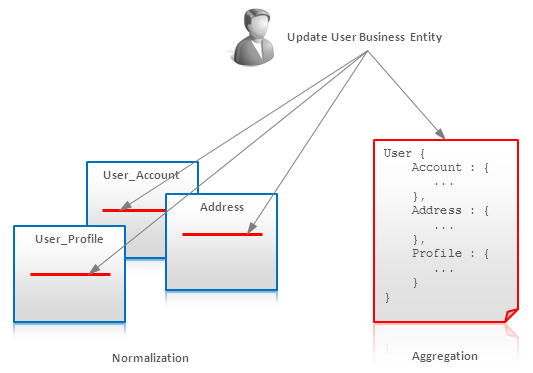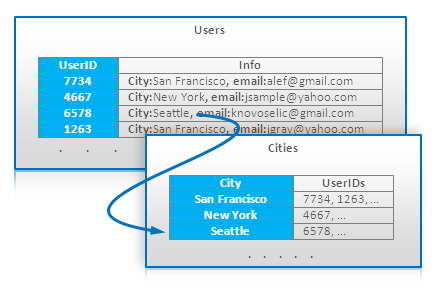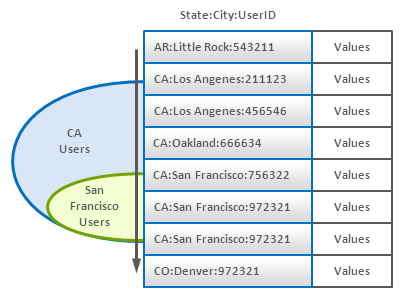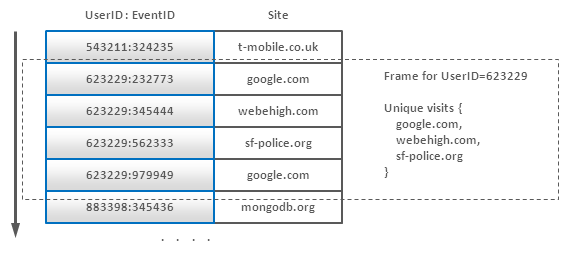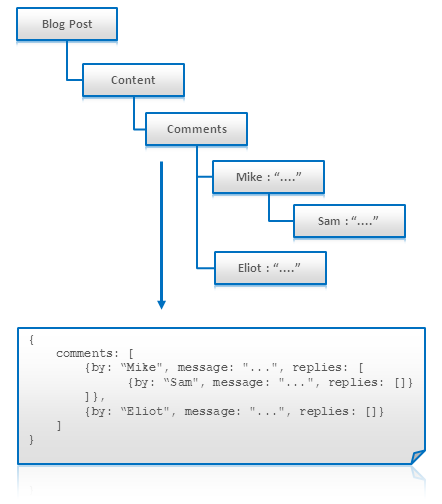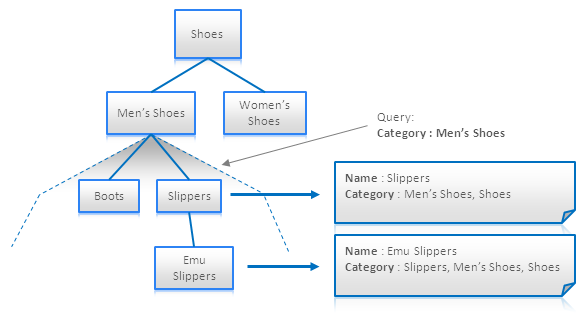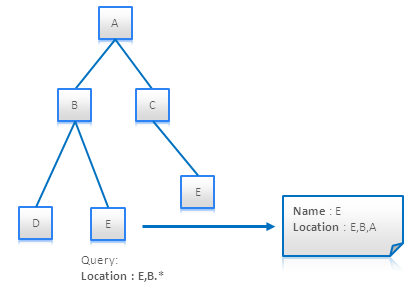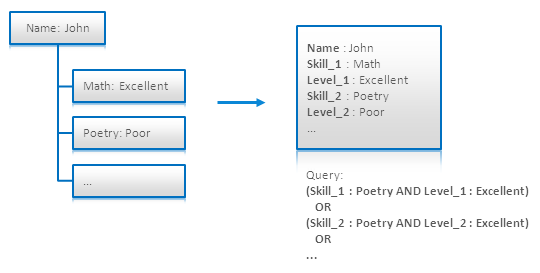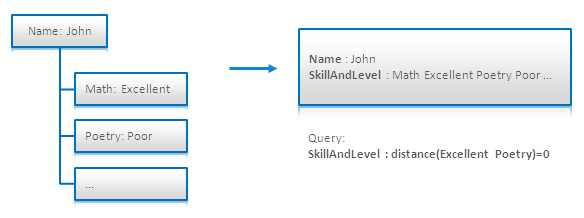这是一篇很牛逼的技术文章,讲述如何对 NoSQL 的数据进行建模。
英文原文:http://highlyscalable.wordpress.com/2012/03/01/nosql-data-modeling-techniques/
NoSQL databases are often compared by various non-functional criteria, such as scalability, performance, and consistency. This aspect of NoSQL is well-studied both in practice and theory because specific non-functional properties are often the main justification for NoSQL usage and fundamental results on distributed systems like CAP theorem are well applicable to the NoSQL systems. At the same time, NoSQL data modeling is not so well studied and lacks of systematic theory like in relational databases. In this article I provide a short comparison of NoSQL system families from the data modeling point of view and digest several common modeling techniques.
To explore data modeling techniques, we have to start with some more or less systematic view of NoSQL data models that preferably reveals trends and interconnections. The following figure depicts imaginary “evolution” of the major NoSQL system families, namely, Key-Value stores, BigTable-style databases, Document databases, Full Text Search Engines, and Graph databases:
NoSQL Data Models
First, we should note that SQL and relational model in general were designed long time ago to interact with the end user. This user-oriented nature had vast implications:
- End user is often interested in aggregated reporting information, not in separate data items, and SQL pays a lot of attention to this aspect.
- No one can expect human users to explicitly control concurrency, integrity, consistency, or data types validity. That’s why SQL pays a lot of attention to transactional guaranties, schemas, and referential integrity.
On the other hand, it turned out that software applications are not so often interested in in-database aggregation and able to control, at least in many cases, integrity and validity themselves. Besides this, elimination of these features had extremely important influence on performance and scalability of the stores. And this was where a new evolution of data models began:
- Key-Value storage is a very simplistic, but very powerful model. Many techniques that are described below are perfectly applicable to this model.
- One of the most significant shortcomings of the Key-Value model is a poor applicability to cases that require processing of key ranges. Ordered Key-Value model overcomes this limitation and significantly improves aggregation capabilities.
- Ordered Key-Value model is very powerful, but it does not provide any framework for value modeling. In general, value modeling can be done by an application, but BigTable-style databases go further and model values as a map-of-maps-of-maps, namely, column families, columns, and timestamped versions.
- Document databases advance the BigTable model offering two significant improvements. The first one is values with schemes of arbitrary complexity, not just a map-of-maps. The second one is database-managed indexes, at least in some implementations. Full Text Search Engines can be considered as allied species in the sense that they also offer flexible schema and automatic indexes. The main difference is that Document database group indexes by field names, as apposed to Search Engines that group indexes by field values. It is also worth noting that some Key-Value stores like Oracle Coherence gradually move towards Document databases via addition of indexes and in-database entry processors.
- Finally, Graph data models can be considered as a side branch of evolution that origins from the Ordered Key-Value models. Graph databases allow to model business entities very transparently (this depends on that), but hierarchical modeling techniques make other data models very competitive in this area too. Graph databases are allied to Document databases because many implementations allow to model value as a map or document.
General Notes on NoSQL Data Modeling
The rest of this article describes concrete data modeling techniques and patterns. As a preface, I would like to provide a few general notes on NoSQL data modeling:
NoSQL data modeling often starts from the application-specific queries as opposed to relational modeling:
- Relational modeling is typically driven by structure of available data, the main design theme is ”What answers do I have?”
- NoSQL data modeling is typically driven by application-specific access patterns, i.e. types of queries to be supported. The main design theme is ”What questions do I have?”
NoSQL data modeling often requires deeper understanding of data structures and algorithms than relational database modeling does. In this article I describe several well-known data structures that are not specific for NoSQL, but are very useful in practical NoSQL modeling.
Data duplication and denormalization are the first-class citizens.
Relational databases are not very convenient for hierarchical or graph-like data modeling and processing. Graph databases are obviously a perfect solution for this area, but actually most of NoSQL solutions are surprisingly strong for such problems. That is why the current article devotes a separate section to hierarchical data modeling.
Although data modeling techniques are basically implementation agnostic, this is a list of the particular systems that I had in mind working on this article:
- Key-Value Stores: Oracle Coherence, Redis, Kyoto Cabinet
- BigTable-style Databases: Apache HBase, Apache Cassandra
- Document Databases: MongoDB, CouchDB
- Full Text Search Engines: Apache Lucene, Apache Solr
- Graph Databases: neo4j, FlockDB
Conceptual Techniques
This section is devoted to the basic principles of NoSQL data modeling.
(1) Denormalization
Denormalization can be defined as copying of the same data into multiple documents or tables in order to simplify/optimize query processing or to fit user’s data into particular data model. Most techniques described in this article leverage denormalization in one or another form.
In general, denormalization is helpful for the following trade-offs:
- Query data volume or IO per query VS total data volume. Using denormalization one can group all data that are needed to process a query in one place. This often means that for different query flows the same data will be accessed in different combinations. Hence we need to copy the same data and increase total data volume.
- Processing complexity VS total data volume. Modeling-time normalization and consequent query-time joins obviously increase complexity of the query processor. Especially in distributed systems. Denormalization allows to store data in a query-friendly form to simplify query processing.
Applicability: Key-Value Stores, Document Databases, BigTable-style Databases
(2) Aggregates
All major genres of NoSQL provide soft schema capabilities in one way or another:
- Key-Value Stores and Graph Databases typically do not pose constraints on values, so value can be of arbitrary format. It is also possible to vary a number of records for one business entity using composite keys. For example, user account can be modeled as a set of entries with composite keys like UserID_name, UserID_email, UserID_messages and so on. If user has no email or messages then a corresponding entry is not recorded.
- BigTable model supports soft schema via variable set of columns within a column family and variable number of versions for one cell.
- Document databases are inherently schema-less, although some of them allow to validate incoming data using user-defined schema.
Soft schema allows to form classes of entities with complex internal structure (nested entities) and vary structure of particular entities.This feature provides two major facilities:
- Minimization of one-to-many relationships by means of nested entities and, consequently, reduction of joins.
- Masking of “technical” differences between business entities and modeling of heterogeneous business entities using one collection of documents or one table.
These facilities are illustrated in the figure below. This figure depicts modeling of product entity for eCommerce business domain. Initially, we can say that all products have ID, Price, and Description. Next, we discover that different types of products have different attributes like Author for Book or Length for Jeans. Some of these attributes have one-to-many or many-to-many nature like Tracks in Music Albums. Next, it is possible that some entities can not be modeled using fixed types at all. For example, Jeans attributes are not consistent across brands and specific for each manufacturer. It is possible to overcome all these issues in relational normalized data model, but solutions are far from to be elegant. Soft schema allows to use single Aggregate (product) that can model all types of products and their attributes:
Entity Aggregation
Embedding with denormalization can greatly impacts updates both in performance and consistency, so a special attention should be paid to update flows.
Applicability: Key-Value Stores, Document Databases, BigTable-style Databases
(3) Application Side Joins
Joins are rarely supported in NoSQL solutions. As a consequence of the “question-oriented” NoSQL nature, joins are often handled at design time as opposed to relational model where joins are handled at query execution time. Query time joins are almost always mean performance penalty, but in many cases one can avoid joins using Denormalization and Aggregates, i.e. embedding of nested entities. Of course, in many cases joins are inevitable and should be handled by an application. The major use cases are:
- Many to many relationships are often modeled by links and require joins.
- Aggregates are often inapplicable when entity internals are subject of frequent modifications. It is usually better to keep a record that something happened as opposed to changing a value and join these records at query time. For example, messaging system can be modeled as a User entity that contains nested Message entities. But if messages are often appended, it may be better to extract Messages to independent entities and join them to User at query time:
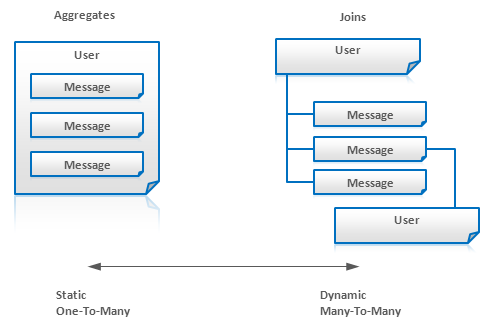
Applicability: Key-Value Stores, Document Databases, BigTable-style Databases, Graph Databases
General Modeling Techniques
In this section we discuss general modeling techniques that applicable to variety of NoSQL implementations.
(4) Atomic Aggregates
Many, although not all, NoSQL solutions have limited transaction support. In some cases one can achieve transactional behavior using distributed locks or application-managed MVCC, but it is common to model data using Aggregates technique to guarantee some of the ACID properties.
One of the reasons why powerful transactional machinery is an inevitable part of the relational databases is that normalized data typically require multi-place updates. On the other hand, Aggregates allow to store one business entity as one document or row or key-value pair and update it atomically:
Atomic Aggregates
Of course, Atomic Aggregates as a data modeling technique is not a complete transactional solution, but if store provides certain guaranties of atomicity, locks, or test-and-set instructions then Atomic Aggregates can be applicable.
Applicability: Key-Value Stores, Document Databases, BigTable-style Databases
(5) Enumerable Keys
Perhaps the greatest benefit of unordered Key-Value data model is that entires can be partitioned among multiple servers just hashing the key. Sorting makes things more complex, but sometimes application is able to take some advantages of ordered keys even if storage doesn’t offer such a feature Let’s consider modeling of email messages as an example:
- Some NoSQL stores provide atomic counters that allow to generate sequential IDs. In this case one can store messages using userID_messageID as a composite key. If the latest message ID is known, it is possible to traverse previous messages. It is also possible to traverse preceding and succeeding messages for any given message ID.
- Messages can be grouped into buckets, say, daily buckets. This allows to traverse mail box backward or forward starting from any specified date or current date.
Applicability: Key-Value Stores
(6) Dimensionality Reduction
Dimensionality Reduction is a technique that allows to map multidimensional data to Key-Value model or other non-multidimensional models.
Traditional geographic information system uses some variation of a Quadtree or R-Tree for indexes. These structures need to be updated in-place and are expansively to manipulate when data volumes are large. An alternative approach is to traverse 2D structure and flatten it to a plain list of entries. One well known example of this technique is Geohash. Geohash uses Z-like scan to fill 2D space and each move is encoded as 0 or 1 depends on direction. Bits for longitude and latitude moves are interleaved as well as moves. Encoding process is illustrated in the figure below, black and red bits stand for longitude and latitude, respectively:
Geohash Index
Important feature of Geohash is ability to estimate distance between regions using bit-wise codes proximity, as it shown in the figure. Geohash encoding allows to store geographical information using plain data models like sorted key values preserving spatial relationships. Dimensionality Reduction technique for BigTable was described in [6.1]. More information about Geohash and other allied techniques can be found in [6.2] and [6.3].
Applicability: Key-Value Stores, Document Databases, BigTable-style Databases
(7) Index Table
Index Table is a very straightforward technique that allows to take advantage of indexes in stores that do not support indexes internally. Most important class of such stores is BigTable-style databases. The idea is to create and maintain a special table with keys that follow the access pattern. For example, there is a master table that stores user accounts that can be accessed by user ID. A query that retrieves all users by a specified city can be supported by means of an additional table where city is a key:
Index Table Example
Index table can be updated for each update of the master table or in batch mode, but, anyway, it is an additional performance penalty and a consistency issue.
Index Table can be considered as an analog of materialized views in relational databases.
Applicability: BigTable-style Databases
(8) Composite Key Index
Composite key is a very generic technique, but it is extremely beneficial when a store with ordered keys is used. Composite keys in conjunction with secondary sorting allows to build kind of multidimensional index which is fundamentally similar to the previously described Dimensionality Reduction technique. For example, let’s take a set of records where each record is a user statistics. If we are going to aggregate these statistics by a region the user came from, we can use keys in form (State:City:UserID) that allow to iterate records for particular state or city given that store supports selection of key ranges by partial key match (as BigTable-style systems do):
1
SELECT Values WHERE state=``"CA:*"
2
SELECT Values WHERE city=``"CA:San Francisco*"
Composite Key Index
Applicability: BigTable-style Databases
(9) Aggregation with Composite Keys
Composite keys may be used not only for indexing, but for different types of grouping. Let’s consider an example. There is a huge array of log records with information about internet users and their visits of different sites (click stream). The goal is to count a number of unique users for each site. This is similar to the following SQL query:
1
SELECT count``(``distinct``(user_id)) FROM clicks GROUP BY site
We can model this situation using composite keys with UserID prefix:
Counting Unique Users using Composite Keys
The idea is to keep all records for one user collocated, so it is possible fetch such a frame into memory (one user can not produce too many events) and eliminate site duplicates using hash table or whatever. An alternative technique is to have one entry for one user and appends sites to this entry as events arrive. Nevertheless, entry modification is generally less efficient than entry insertion in the majority of implementations.
Applicability: Ordered Key-Value Stores, BigTable-style Databases
(10) Inverted Search – Direct Aggregation
This technique is more data processing pattern, rather than data modeling. Nevertheless, data models are also impacted by usage of this pattern. The main idea of this technique is to use an index to find data that meets a criteria, but aggregate data using original representation or full scans. Let’s consider an example. There is a number of log records with information about internet users and their visits of different sites (click stream). Let assume that each record contains user ID, categories this user belongs to (Men, Women, Bloggers, etc), city this user came from, and visited site. The goal is to describe the audience that meet some criteria (site, city, etc) in terms of unique users for each category that occurs in this audience (i.e. in the set of users that meet the criteria).
It is quite clear that search of users that meet the criteria can be efficiently done using inverted indexes like {Category -> [user IDs]} or {Site -> [user IDs]}. Using such indexes, one can intersect or unify corresponding user IDs (this can be done very efficient if user IDs are stored as sorted lists or bit sets) and obtain an audience. But description of audience which is similar to aggregation query like
1
SELECT count``(``distinct``(user_id)) ... GROUP BY category
can not be handled efficiently using inverted index if number of categories is big. To cope with this one can build a direct index in form {UserID -> [Categories]} and iterate it in order to build a final report. This schema is depicted below:
Counting Unique Users using Inverse and Direct Indexes
And as a final note, we should take into account that random retrieval of records for each user ID in the audience can be inefficient. One can struggle with this problem leveraging batch query processing. This means that some number of users sets can be precomputed (for different criteria) and then all reports for this batch of audiences can be computed in one full scan of direct or inverse index.
Applicability: Key-Value Stores, BigTable-style Databases, Document Databases
Hierarchy Modeling Techniques
(11) Tree Aggregation
Trees or even arbitrary graphs (with the aid of denormalization) can be modeled as a single record or document.
- This techniques is efficient when the tree is accessed at once (for example, an entire tree of blog comments is fetched to show a page with a post).
- Search and arbitrary access to the entires may be problematic.
- Updates are inefficient in the most of NoSQL implementations (in comparison with independent nodes).
Tree Aggregation
Applicability: Key-Value Stores, Document Databases
(12) Adjacency Lists
Adjacency Lits is a straightforward way of graph modeling – each node is modeled as an independent record that contains arrays of direct ancestors or descendants. It allows to search for nodes by identifiers of their parents or children and, of course, traverse a graph doing one hop per query. This approach is usually inefficient for getting an entire subtree for some node, for deep or wide traversals.
Applicability: Key-Value Stores, Document Databases
(13) Materialized Paths
Materialized Paths is a technique that helps to avoid recursive traversals of tree-like structures. This technique can be considered as a kind of denormalization. The idea is to attribute each node by identifiers of all its parents or children, so is possible to determine all descendants or predecessors of the node without traversal:
Materialized Paths for eShop Category Hierarchy
This technique is especially helpful for Full Text Search Engines because it allows to convert hierarchical structure to flat documents. One can see in the figure above that all products or subcategories within the Men’s Shoes category can be retrieved using a short query which is simply a category name.
Materialized Paths can be stored as a set of IDs or as a single string of concatenated IDs. The later option allows to search for nodes that meet a certain partial path criteria using regular expressions. This option is illustrated in the figure below (path includes node itself):
Query Materialized Paths using RegExp
Applicability: Key-Value Stores, Document Databases, Search Engines
(14) Nested Sets
Nested sets is a standard technique for tree-like structures modeling. It is widely used in relational databases, but it is perfectly applicable to Key-Value Stores and Document Databases. The idea is to store leafs of the tree in array and map each non-leaf node to a range of leafs using start and end indexes, as it shown in the figure below:
Modeling of eCommerce Catalog using Nested Sets
This structure is pretty efficient for immutable data because it has small memory footprint and allows to fetch all leafs for a given node without traversals. Nevertheless, inserts and updates are quite costly because addition of one leaf cause extensive update of indexes.
Applicability: Key-Value Stores, Document Databases
(15) Nested Documents Flattening: Numbered Field Names
Search Engines typically work with flat documents, i.e. each document is a flat list of fields and values. The goal of data modeling is to map business entities to plain documents and this can be challenging if entities have complex internal structure. One typical challenge is a mapping of documents with hierarchical structure, i.e. documents with nested documents inside. Let’s consider the following example:
Nested Documents Problem
Each business entity is some kind of resume. It contains person’s name, a list of his or her skills with a skill level. An obvious way to model such entity is to create a plain document with Skill and Level fields. This model allows to search for person by skill or by level, but queries that combine both fields are liable to false matches, as depicted in the figure above.
One way to overcome this issue was suggested in [4.6] The main idea of this technique is to index each skill and corresponding level as a dedicated pair of fields Skill_i and Level_i and search all these pairs simultaneously (number of OR-ed terms in a query is as high as a maximum number of skills for one person):
Nested Document Modeling using Numbered Field Names
This approach is not really scalable because query complexity grows rapidly as a function of number of nested structures.
Applicability: Search Engines
(16) Nested Documents Flattening: Proximity Queries
The problem with nested documents can be solved using another technique that was also described in [4.6]. The idea is to use proximity queries that limit acceptable distance between words in the document. In the figure below, all skills and levels are indexed in one field, namely, SkillAndLevel, and query tells that words “Excellent” and “Poetry” should follow one another:
Nested Document Modeling using Proximity Queries
Work [4.3] describes a success story for this technique used on top of Solr.
Applicability: Search Engines
(17) Batch Graph Processing
Graph databases like neo4j are exceptionally good for exploring a neighborhood of a given node or exploring relationships between two or few nodes. Nevertheless, global processing of large graphs is not very efficient because general purpose graphs databases do not scale well. Distributed graph processing can be done using MapReduce and Message Passing pattern that was described, for example, in one of my previous articles. This approach makes Key-Value stores, Document databases, and BigTable-style databases suitable for processing of large graphs.
Applicability: Key-Value Stores, Document Databases, BigTable-style Databases
References
Finally, I provide a list of useful links related to NoSQL data modeling:
- Key-Value Stores:
- http://www.devshed.com/c/a/MySQL/Database-Design-Using-KeyValue-Tables/
- http://antirez.com/post/Sorting-in-key-value-data-model.html
- http://stackoverflow.com/questions/3554169/difference-between-document-based-and-key-value-based-databases
- http://dbmsmusings.blogspot.com/2010/03/distinguishing-two-major-types-of_29.html
- BigTable-style Databases:
- http://www.slideshare.net/ebenhewitt/cassandra-datamodel-4985524
- http://www.slideshare.net/mattdennis/cassandra-data-modeling
- http://nosql.mypopescu.com/post/17419074362/cassandra-data-modeling-examples-with-matthew-f-dennis
- http://s-expressions.com/2009/03/08/hbase-on-designing-schemas-for-column-oriented-data-stores/
- http://jimbojw.com/wiki/index.php?title=Understanding_Hbase_and_BigTable
- Document Databases:
- http://www.slideshare.net/mongodb/mongodb-schema-design-richard-kreuters-mongo-berlin-preso
- http://www.michaelhamrah.com/blog/2011/08/data-modeling-at-scale-mongodb-mongoid-callbacks-and-denormalizing-data-for-efficiency/
- http://seancribbs.com/tech/2009/09/28/modeling-a-tree-in-a-document-database/
- http://www.mongodb.org/display/DOCS/Schema+Design
- http://www.mongodb.org/display/DOCS/Trees+in+MongoDB
- http://blog.fiesta.cc/post/11319522700/walkthrough-mongodb-data-modeling
- Full Text Search Engines:
- http://www.searchworkings.org/blog/-/blogs/query-time-joining-in-lucene
- http://www.lucidimagination.com/devzone/technical-articles/solr-and-rdbms-basics-designing-your-application-best-both
- http://blog.griddynamics.com/2011/07/solr-experience-search-parent-child.html
- http://www.lucidimagination.com/blog/2009/07/18/the-spanquery/
- http://blog.mgm-tp.com/2011/03/non-standard-ways-of-using-lucene/
- http://www.slideshare.net/MarkHarwood/proposal-for-nested-document-support-in-lucene
- http://mysolr.com/tips/denormalized-data-structure/
- http://sujitpal.blogspot.com/2010/10/denormalizing-maps-with-lucene-payloads.html
- http://java.dzone.com/articles/hibernate-search-mapping-entit
- Graph Databases:
- Demensionality Reduction:


